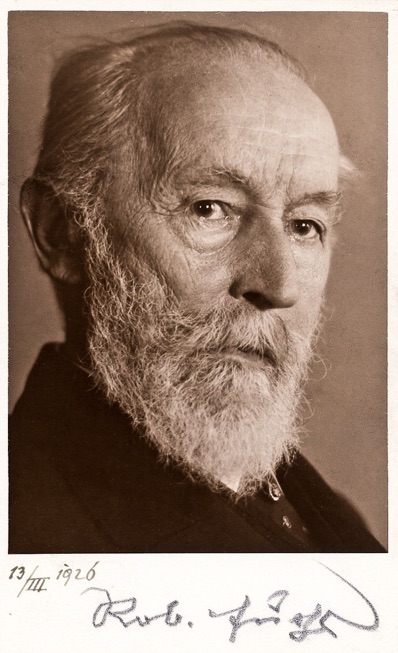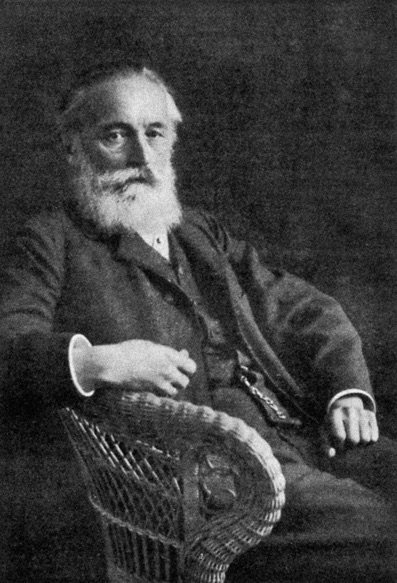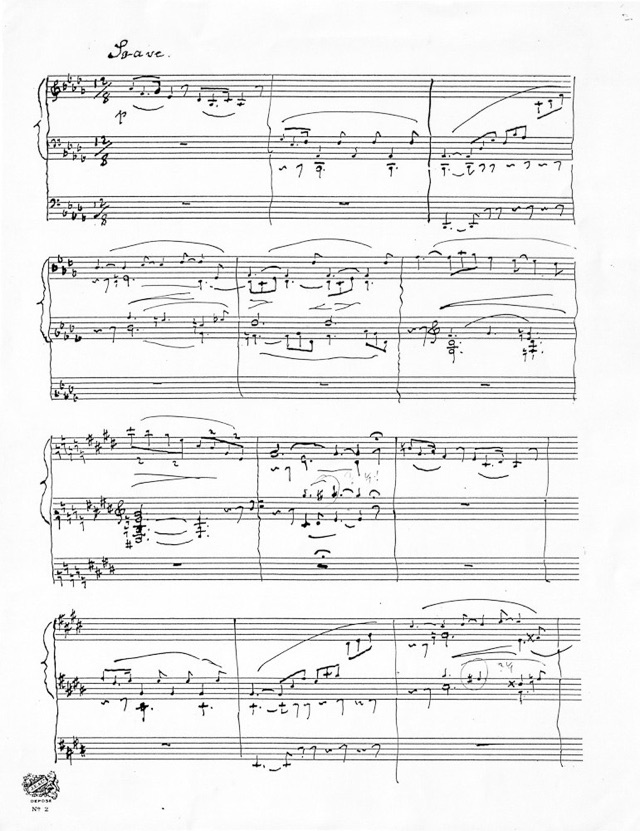
Robert Fuchs
ROBERT FUCHS (1847 – 1927)
“When will we finally do something new and stop just crying over Brahms’ grave?” wrote Hellmesberger around 1900. This request was meant quasi for himself – the circle of Brahms’ epigones. Members of this circle were – insofar as it matters to organists – Rudolf Bibl (the best behaved), Heinrich von Herzogenberg (the most prosaic) and Robert Fuchs (the most musical). Fuchs, who repeatedly received flattering remarks from Brahms and had achieved fame especially due to his serenades for strings, succeeded also as a composition teacher and has influenced a whole generation of Austrian musicians: Zemlinsky, Hugo Wolf, Mahler, Schreker – even Sibelius had studied with him for one year – and the last Austrian symphonist, Franz Schmidt, who originally had intended to study under Bruckner but eventually enrolled with Fuchs due to Bruckner’s poor health.
From his youth on, Fuchs was familiar with using the organ for artistic expression. In Vienna, he had temporarily earned some additional money as an organist in the Piaristenkirche and when at the World Exposition in 1873 several organ builders presented their work, he “dashed passionately from one organ to another to test their sound and timbre”. Later on, he was appointed k.u.k. (imperial and royal) court organist. However, only as a mature composer in 1909, he took the chance to write a few works for this instrument. “For domestic use” (Mayr), Fuchs had arranged nearly all organ pieces also for piano 4 hands.

Robert Fuchs
All three fantasies, the latest of which is for the first time to appear in print, are multipart pieces where not all that different parts are arranged in free sequence. In the fantasies in C major (1909) and D flat major, Fuchs trusts for bundling and conclusion in the regulatory power of a fugue. Apart from that, the serenade sound is predominant or at least not absent; frequently, the idiomatic characteristics and phrasing of the strings show through. Only temporarily the idylls are punctuated by rebelling rubato blocks where the dynamics too has to be changed rapidly. Fuchs seems to have possessed a profound knowledge of the novel options of the swell, he even might have overrated them a bit; his organ pieces are somewhat generously marked with small-scaled crescendo and decrescendo hairpins. In his fugues, Fuchs incidentally makes an extensive use of inversions which at the end of the Fantasy in D flat major results in a both complex and brilliant simultaneous conduct of both forms; his delight in the inversion of a theme shows Fuchs as a definite Brahms-epigone. The Fantasy in D flat major shows clearly the date “June 23, 1917” in its autograph and is therefore a very late work. It is not without a certain feeling of affection when we picture the seventy years old artist, writing unwaveringly and masterly the music of 1875. Fifteen years have passed since Debussy’s “Pelléas and Mélisande”, 12 years since Richard Strauss’ “Salome”, and already 8 years since the “Drei Klavierstücke” op. 11 by Arnold Schönberg. Unaware, the last year of the monarchy is dawning. This edition is based on a photocopy that reached me under circumstances which are no longer clearly explainable. A corresponding original couldn’t be found either in the Department of Music of the Austrian National Library or in the Archive of the Society of Music Friends.
Peter Planyavsky

(Österreichische Nationalbibliothek – Musiksammlung)
